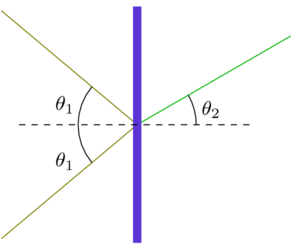Waterslide Wipeout
Posted by David Zaslavsky on — Edited
Like everyone else, I feel a need to analyze the giant water slide in the latest Mythbusters episode. But honestly, there isn’t much left to say. The original video has been around for a while and everybody else who does this kind of analysis has already had the chance to do it. Example 1; example 2 (okay, so I’m only linking to one blog, but there must be more).
I guess I might as well do the obvious calculation, but I’ll use the Mythbusters’ parameters instead of those from the original video (which are unknown). The slide starts with a downward ramp \(\unit{165}{\foot}\) long at a \(\unit{24}{\degree}\) slope, which then curves upward to a \(\unit{30}{\degree}\) launch ramp that terminates \(\unit{12}{\foot}\) above the surface of the lake. They didn’t say how long the launch ramp is, but I can work without that information. I’ll be trying to calculate two quantities mentioned on the show: how far each Mythbuster flies from the end of the ramp, and his maximum speed.
(here’s a full-size version)
There are two parts to this problem:
- The slide
- The flight
The first part …

